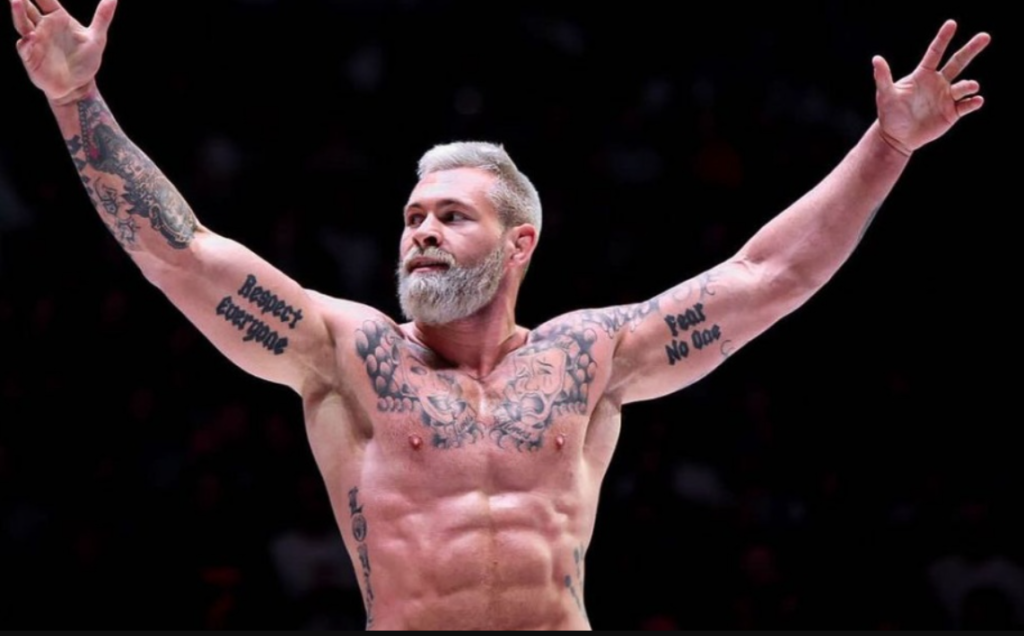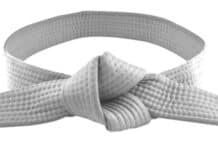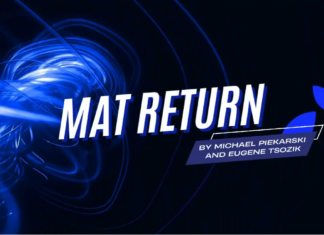
With the onslaught of steroid-infused physiques in BJJ, and the multiple professional competition platforms that essentially shamelessly promote said physiques, it is easy for the everyday BJJ practitioner to feel out of place and ask themselves if big muscles are going to bring about a positive impact on their grappling progress. The question is not whether or not you need muscles for BJJ, but rather how big they should be, and if you can build them up just by grappling.
The Best Body Type For Jiu-Jitsu
Yeah, there is no such thing. As you can see, many people are wildly successful in the sport without sharing a very specific body type. Jiu-Jitsu is ever-changing and super adaptable which means there’s no real standard for the ultimate Jiu-Jitsu physique, despite some people claiming that lanky people hold an advantage.
It comes down to the game you’re going to play. Your body type is going to reflect your game, and vice versa. If you want to carry big muscles (think Gordon Ryan, Andre Galvao, Nick Rodriguez, Rousimar Palhares…) you will have a game centered around your body’s strong suit.
If you are a hardgainer, then you might favor the more flexible and movement-based approach to BJJ (think Mikey Musumeci, Garry Tonon, Keenan Cornelius…).
Of course, you have those in between, like the Ruotolo brothers who seem to be able to switch between the ultra-flexible motion-based game and the powerful pressure game often associated with big muscles in BJJ. The endpoint here is that the body type that you have and can sustain is going to be the best one for your Jiu-Jitsu.
And still, if you’re all about muscles and that bodybuilder physique as a grappler, you need to understand a few things, including how and if you can build muscles with BJJ and the advantages and disadvantages of going the big muscles route.
Disadvantages of Having Big Muscles for BJJ
As with everything else, carrying around a lot of muscle tissue is not always going to help you in your grappling. On the contrary, there are detriments to consider in terms of mat performance. Two major drawbacks are the tradeoffs in mobility for carrying around big muscles for Jiu-Jitsu and the metabolic demands that come with a muscle-filled frame.
Decreased Mobility
The larger the muscle, the less mobility there will be for the adjoining joints. A great example is the shoulder. Every grappler who has big muscles on their shoulders has mobility issues with the shoulder joint. When it comes to defending bent armlocks, this might be a problem, as there is next to no margin for you to apply defense before the pain starts as a result of the reduced mobility of the shoulder.
The same applies to joints across the body, from hips and knees to the spine.
Metabolic Demands
Every tissue in the body burns energy, and the muscles are big spenders in particular. The demands for muscles come in the form of glycogen, which is actually stored inside them so it is easy to access. The drawback is that glycogen runs out and oxygen is required to keep the muscles working, albeit at a slower rate compared to glycogen.
This means that your cardiovascular system and your conditioning need to be up to par with the amount of muscle tissue you’re carrying around when grappling. That is why most grapplers with big muscles have slow-paced games based on pressure rather than jumping around and spinning in every direction. Plus, steroids help with endurance.
Advantages of Having Big Muscles for BJJ
Having big muscles in BJJ is not all bad, though, as you’ve probably experienced when one of those huge but technical powerlifters starts using you as a Rubik’s cube.
The muscles definitely help when it comes to strength, pressure, and even tactics during grappling.
Weight Distribution
When you understand how to distribute weight so that you feel like a mountain on top of someone, having the muscles to actually weigh like a mountain only helps increase the feeling of desperation in the person on the bottom.
Big muscles are great when you’re on top of someone, or dragging someone in a battle while standing that requires them to carry your weight. The bigger the muscles, the easier it is to be heavy without even looking to apply weight distribution principles, which gives you a tactical advantage that is almost unfair.
Specific Strength
Big muscles, when trained properly, can not only be strong but also explosive. This gives you a multifaceted use of athletic abilities, changing between strength and power to aid in the technical execution of your Jiu-Jitsu.
Do not fall for the old “technique beats strength” dogma. What happens when technique meets superior strength and technique? You already know the answer to that.
While strength is relative, and big muscles do not always equal big strength (BJJ and bodybuilding are a much less potent combination than BJJ and powerlifting), being stronger can only be helpful in BJJ, whether it is to finish that submission, or power your way up for that all-important sweep.
Tactical Advantages
This is where you start using your muscles and larger frame to prevent people from being able to execute Brazilian Jiu-Jitsu techniques. For example, positioning your shoulder so that Darces and triangles become extremely difficult to sinch in.
Another example would be rolling the big shoulder muscles to prevent collar ties and frustrating people that take your back with wide lats that make keeping a hold of the seatbelt a real chore.
Can Brazilian Jiu-Jitsu Build Muscle?
The short answer is yes, but there is a “but’. There always is one, isn’t there? BJJ can help you build muscles but only to a certain extent, and in certain parts of your body. If you want big calves for example or huge thighs, you will need to look elsewhere.
The bottom line is that you can build muscle with BJJ but it is one of the least optimal ways to do so, and it won’t help you build big muscles in a balanced way throughout the entire body. There is ad dedicated sport for that. It is called bodybuilding.
Muscle Groups That BJJ Strengthens
Apart from looking like Popeye in your forearms, which is basically unavoidable especially if you train exclusively with the Gi, there are certain muscle groups that will benefit a lot from BJ training. In fact, there are some muscles, like the deep muscles of the core that can only get developed through activities like BJJ.
The muscles that get the most attention during Jiu-Jitsu are the core, the hip muscles, and the muscles of the torso, predominantly the pulling ones.
Core Muscles
The core muscles involve not just the abs, but also the muscles of the lower back, mid back, front shoulder muscles, and some hip muscles. Most of these are not clearly visible and having big muscles in those areas is going to help your BJJ, but not do much for your physique.
Most of the strength we use during grappling comes from the core. It is responsible for twisting, stabilizing, extending, flexing, and isometric holds, which means that Jiu-Jitsu is the premiere activity, along with gymnastics, to develop a well-rounded core musculature.
Hips
The hips are an often overseen group of muscles when it comes to bodybuilding. They are mostly rated in the realm of flexibility, but strong hips are crucial to unlocking a huge athletic potential for rigorous movement activities like grappling.
Similar to the core, these muscles are not overly visible but are crucial to your performance on the mats.
Torso
The upper and lower muscles of the torso, in the form of the muscles around the spine, abs and obliques are going to not only get bigger but also develop the ability to function in a high-performance fashion while growing.
The muscles of the upper part of the torso, the traps, lats, shoulders, and even portions of the chest also get a real workout every time you grapple. Moving the muscles against resistance through planes of motion that are impossible to achieve with weight training will help you develop big muscles that are also functional just by rolling on a regular basis.
Building Muscle With Jiu-Jitsu Training
The approach to building big muscles through Jiu-Jitsu is the same as powerlifting or bodybuilding. First, you need to determine your goal, note your starting point, be sure to be aware of what and how much you eat and put as many muscles as possible under the correct tension and resistance in optimal frequencies. As stated, it’s just like making a weight training gains plan.
Starting Point
The starting point means you are aware of your weight, and preferably your percentage o bodyfat. When you’re looking to gain some muscle, you will gain some fat along with it, so starting a gains cycle, even if it is by BJJ only, should begin with you at a relatively low percentage of fat, somewhere along the 10-15% range.
Calculating Calories
As boring as it sounds you will need to know your BMR (basic metabolic rate) and the maintenance threshold that your body requires just to stay at your current weight. Then, you will need to increase it by several hundred calories (depending on your size, age, sex, and goals) and take it from there.
Fueling your training is key, and the calculations are actually very easy to do as there are plenty of BMR calculators online that will do all the math for you.
Resistance Training On The Mats
When you’re looking to build big muscles by mostly grappling, you will need to make sure you’re not slacking on the mats. Every roll is a hard roll, and you will need to make sure you push, pull, and squeeze your training partners repeatedly. Every round is a competition round, which means you’ll need training partners to accommodate your needs.
You will also need to give yourself time to rest. There’s no rolling round after round. In fact, shorter rounds and longer rest periods in combination with the surplus in calories will allow you to see muscle growth from BJJ.
Supplemental Training
If you really want to have bigger muscles that will work in BJJ, you’ll need to build muscles in a balanced way all over your body. Consider powerlifting as it will involve only core lifts, like bench press, squat, and deadlift, rather than bodybuilding splits and modern CrossFit -style types of training.
Supplement your BJJ training with at least two days of lifting per week, to introduce some balance and watch those big muscles pop!
FAQs About Big Muscles in BJJ
Let’s try and clear up some of the most common questions and inquiries people have about big muscles and BJJ, from building them to training with them and looking like a model on the cover of Men’s Health.
Does BJJ Make Your Muscles Bigger?
Brazilian Jiu-Jitsu is going to help you increase the size and strength of all muscle groups when you start training. However, it will keep improving the size and performance of certain muscle groups more than others, and it will only take your muscle growth to a certain point, after which you’ll need supplemental weight training.
Can Brazilian Jiu-Jitsu Build Muscle?
Yes, BJJ can build muscle, especially if you are a complete beginner that is not weight training on the side. If you’re already used to weight training, BJJ won’t do you much good in the big muscles building department.
How Much Muscle Is Too Much?
When muscle tissue becomes difficult to keep on, and you feel it impacting your mobility while providing no strength in return, you’re at the threshold of your muscle size for Jiu-Jitsu. If you notice your cardio going notably down, you should also consider giving building muscles a rest.
Also, if you’re bound by weight classes, you’ll only have so limited room for improving your body composition in the direction of building big muscles.
Can You Get In Shape With BJJ?
Yes, BJJ will get you in shape. It will help you lose fat and build some muscle, but remember that it will get you in shape for Jiu-Jitsu and grappling, and not a general shape suited for everything, In other words, you’ll still suck at swimming.
Will BJJ Make You Stronger?
In most cases, yes, Jiu-Jitsu will help you build strength by building muscle and connective tissue over time. There are many types of strength and BJJ will help you increase your relative strength and strength speed.
Does BJJ Build Legs?
Given that most of the exchanges happen on the ground, and there’s no real external resistance against the legs while grappling, BJJ is not going to help you build either big or powerful legs.
Can You Get Abs From BJJ?
You can get abs from every activity you do, including BJJ, under one condition – that oy have a clean and sustainable diet.
Will BJJ Get You Ripped?
It depends on your perception of ripped, but at the end of the day, Jiu-Jitsu will help you improve body composition, but it won’t get you looking like Gordon Ryan or UFC fighters during weigh-ins.
If getting ripped is your goal, BJJ is going to work best as your means of cardio in your quest for a specific physique.
In Conclusion
Do you need big muscles n BJJ? Yes.
How big? It all depends on your game and end goals.
Can BJJ help you build big muscles? To a certain extent, and specific muscles yes. In order to develop all muscles in a balanced way, you’ll need to introduce weight training as well.















































